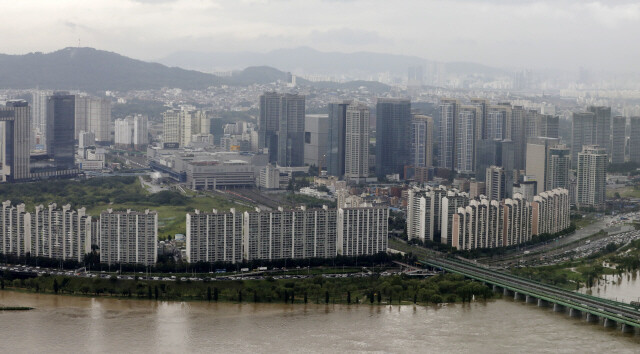Yongsan’s’Hannam The Hill’ is the highest in the country for 7 consecutive years… 7.75 billion won last year
Investigation of the actual transaction price of direct room… 53 Gangnam-gu in the Top 100
 . (The picture above is not directly related to the article)” alt=”Material photo of
. (The picture above is not directly related to the article)” alt=”Material photo of <한겨레> Material photo. (The picture above is not directly related to the article)
It was found that the high-priced housing’Hannam The Hill’ in Hannam-dong, Yongsan-gu, Seoul, recorded the highest selling price of apartments nationwide for seven consecutive years. According to a survey conducted by the real estate platform Jikbang on the 15th, Hannam The Hill recorded the most expensive actual transaction price in the country last year, with an exclusive area of 243.642m2 sold for 7.75 billion won in October last year. Hannam The Hill was KRW 6.65 billion in 2014 (243.642㎡ for exclusive use), 7.7 billion KRW in 2015 (244.749㎡ for exclusive use), 8.2 billion KRW in 2016 (244.749㎡ for exclusive use), 7.8 billion KRW in 2017 (244.783㎡ for exclusive use), and 8.1 billion KRW in 2018 244.783m2 for exclusive use) and 8.4 billion won for exclusive use in 2019 (244.749m2 for exclusive use), and it has maintained its position as the nation’s highest trading price for seven consecutive years. Jikbang explained, “Before the appearance of Hannam The Hill, the highest price was between 4 billion and 5 billion won, but since Hannam The Hill began trading, the highest price level has risen to between 7 billion and 8 billion won.” Last year, Gangnam-gu was the largest with 53 apartments in the top 100 (110 including the same ranking) in actual transaction price. This was followed by 26 in Yongsan-gu, 25 in Seocho-gu, and 6 in Seongdong-gu. In 2019, apartments in these areas also ranked in the top 100, but last year, the proportion of Gangnam-gu (24%→48%) and Seocho-gu (8%→23%) increased, and Yongsan-gu (59%→24%), and Seongdong-gu ( 7%→5%) decreased the proportion. The apartment with the highest sales price in 2020 compared to the highest sales price in 2019 was 245.2㎡ for Hyundai 7th Vehicle in Apgujeong-dong, Gangnam-gu, rising 1.5 billion won a year from 5.2 billion won in 2019 to 6.7 billion won last year. By Choi Jong-hoon, staff reporter [email protected]
